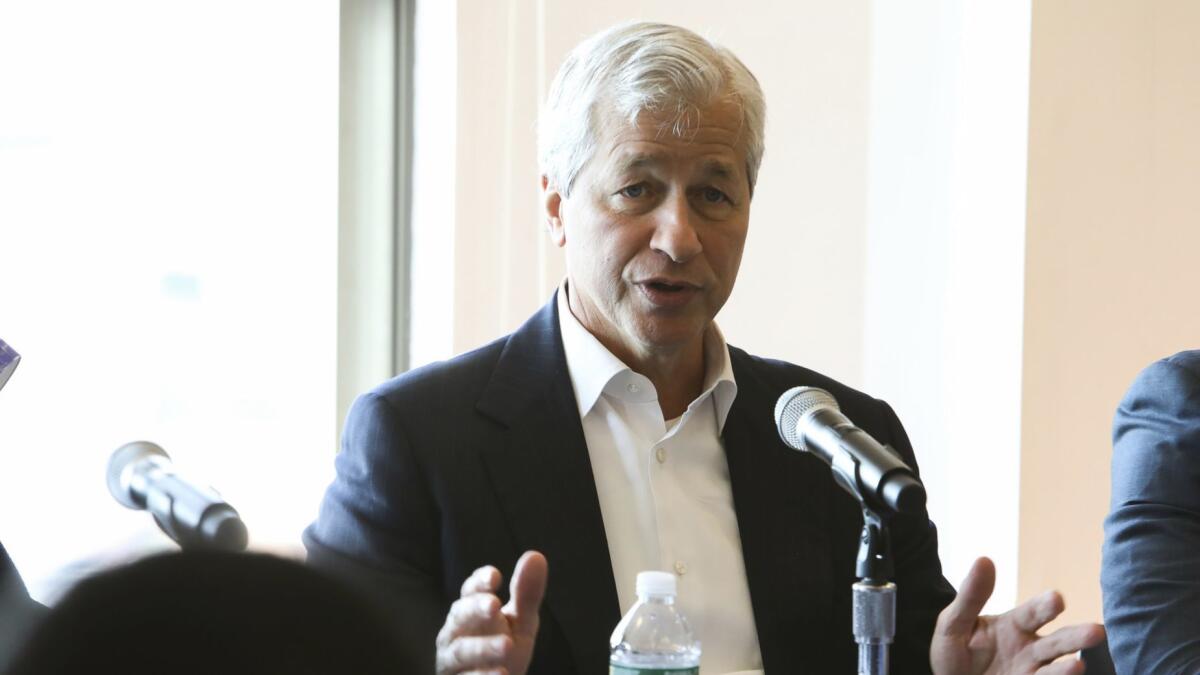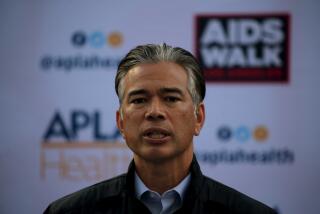Column: That big Bezos/Buffett/Dimon healthcare initiative is already bogged down in blather

Back on Jan. 30, it will be remembered, the entire healthcare world and much of the punditocracy waxed euphoric over the announcement that three corporate heavyweights — Jeff Bezos, Warren Buffett, and Jamie Dimon — were putting their heads together to solve America’s healthcare problem.
Now it turns out that we were right. Not only is the big joint venture getting off to a slow start, but it’s also already hamstrung by vacuous nostrums, solutions known not to work, and a focus on exactly the wrong issues.
This effort is just beginning, and we intend to start small.
— JPMorgan Chase CEO Jamie Dimon.
How do we know this? Because Jamie Dimon himself as much as said so. In his annual letter to shareholders of his company, JPMorgan Chase, Dimon delivered an update on the project. It’s very revealing, though possibly not in the way Dimon intended.
First, some quick background. From the outset, the three executives were extremely vague about what they intended. (Bezos is the founder and chairman of Amazon, and Buffett’s company is Berkshire Hathaway.) They said their firms would create “an independent company that is free from profit-making incentives and constraints” to focus on “technology solutions” to the healthcare cost mystery. “Our group does not come to this problem with answers,” Buffett acknowledged. “But we also do not accept it as inevitable.”
As we pointed out at the time, however, there really is no healthcare cost mystery. Every other developed country has shown it knows how to keep costs low — roughly at half the per-capita spending of the United States. The solution is to control prices — doctor and hospital charges, and the prices of prescription drugs. Do that, and there’s no reason that the U.S. can’t bring the 18% of gross domestic product it currently spends on healthcare closer to the average among comparable countries, which is 9%.
According to Dimon, however, price control will play no part in the tripartite group’s approach to healthcare reform. At least, he doesn’t mention it.
What he does talk about in his update are things like this:
-- “Studying the extraordinary amount of money spent on waste, administration and fraud costs.” Dimon claims these categories account for up to 40% of U.S. healthcare costs, which sounds ridiculously high. As we’ve mentioned in the past, “waste, fraud and abuse” are the three horsemen of the apocalypse that get led out on a canter whenever you have nothing else to say.
Dimon doesn’t specify how much of his 40% should be attributed to “fraud” and how much to “administrative” costs, but if he’s serious about the latter, the solution is staring him in the face: single-payer healthcare, which would strip administrative complexities out of our current system. The administrative costs of Medicare, which resembles a single-payer system for the 65-plus population, come to less than 2%. Single-payer options aren’t mentioned by Dimon at all.
-- “Developing better wellness programs, particularly around obesity and smoking.” Wellness programs are popular in the corporate world, despite the lack of any evidence that they reduce costs or even lead to better employee health. The possible exceptions are programs aimed at helping patients manage chronic diseases, but that’s different from anti-obesity and anti-smoking programs. Wellness programs do, however, often give employers a way to pry into their workers’ private lives, which may be why CEOs like Dimon think they’re swell.
-- “Determining why costly and specialized medicine and pharmaceuticals are frequently over- and under-utilized.” So, what is it? Overutilized or underutilized? The answer is, sometimes the former, sometimes the latter, and sometimes neither.
The bottom line is that pharmaceutical prices in the U.S. are far higher than those in the rest of the developed world because the U.S. doesn’t place a cap on what drugmakers can charge and limits the ability of public programs (except the Department of Veterans Affairs) to negotiate prices for their enrollees or exclude overpriced and relatively ineffective drugs from their formularies.
-- “Examining the extraordinary amount of money spent on end-of-life care, often unwanted.” This is another nugget of received wisdom that doesn’t stand up to scrutiny. The notion that U.S. healthcare costs are driven in any significant way by end-of-life care, much less “unwanted” care, isn’t backed by the numbers.
A study published in 2016 found that average U.S. healthcare expenditures for patients in their last six months of life were in the middle of the pack — lower than Canada and Norway, higher than Germany and Belgium. And researchers at Mt. Sinai medical school and the VA estimated in 2015 that about 13% of U.S. healthcare spending was devoted to care for patients in their last year of life. Among patients with the highest costs, moreover, only 11% were in their last year of life.
Are these figures “extraordinary”? The researchers called the notion a “myth.” How much could or should be dispensed with, and how much is “unwanted”? Doctors don’t know, and Dimon doesn’t know. If he has any ideas of what to substitute for it, and how to determine when to stop paying, he doesn’t give them.
Dimon seems to be trying to tamp down expectations that the billionaire executives’ efforts will produce anything useful any time soon, if ever. “This effort is just beginning, and we intend to start small,” he writes. “We will report on our progress in the coming years.” That’s a pretty long time frame for a venture that was hailed as the solution on front pages just a couple of months ago.
He does say that the venture “will be using top management, big data, virtual technology, better customer engagement and the improved creation of customer choice (high deductibles have barely worked).” This is a comprehensive a collection of buzzwords as ever emanated from a CEO’s mouth, though it’s proper to point out that Dimon’s reference to high deductibles is a bit misleading. They do work to reduce consumer spending; the problem is that they discourage spending on needed treatments as well as on unneeded care.
The best clue that the venture is already spinning its wheels is Dimon’s description of “the process that will help us fix” the healthcare “problem.” He says, “we need to form a bipartisan group of experts whose direct charge is to fix our healthcare system.” Form a committee: Where have we heard that before?
No one should criticize these executives for addressing healthcare issues head-on. But given their experience and the excitement their alliance generated in January, one would have expected them to have a much better sense of where they need to lead us.
Keep up to date with Michael Hiltzik. Follow @hiltzikm on Twitter, see his Facebook page, or email [email protected].
Return to Michael Hiltzik’s blog.
More to Read
Inside the business of entertainment
The Wide Shot brings you news, analysis and insights on everything from streaming wars to production — and what it all means for the future.
You may occasionally receive promotional content from the Los Angeles Times.











